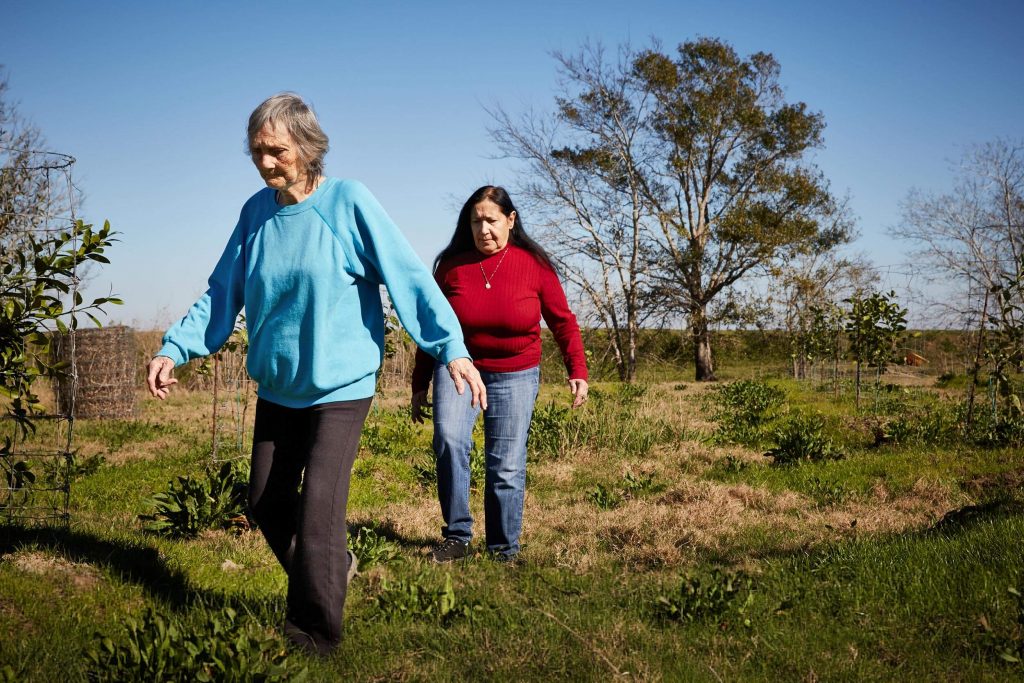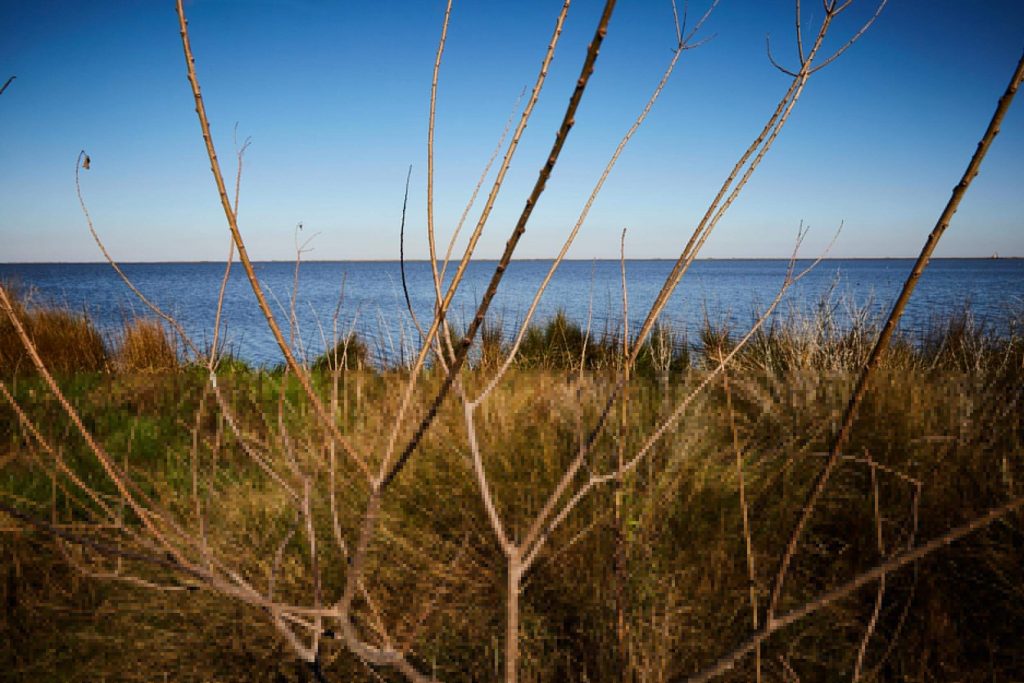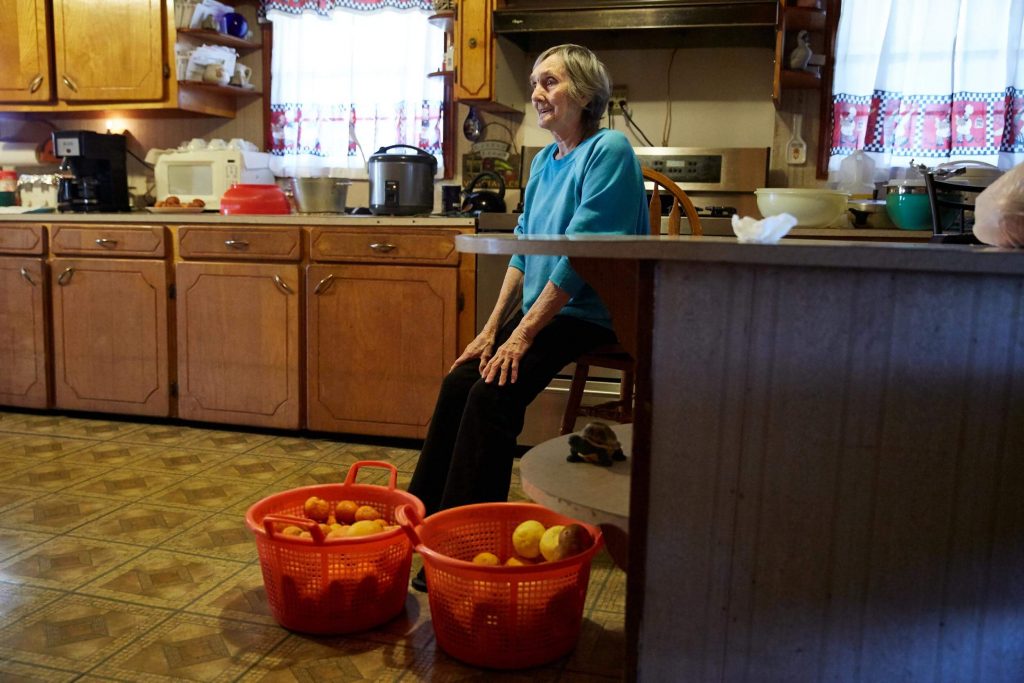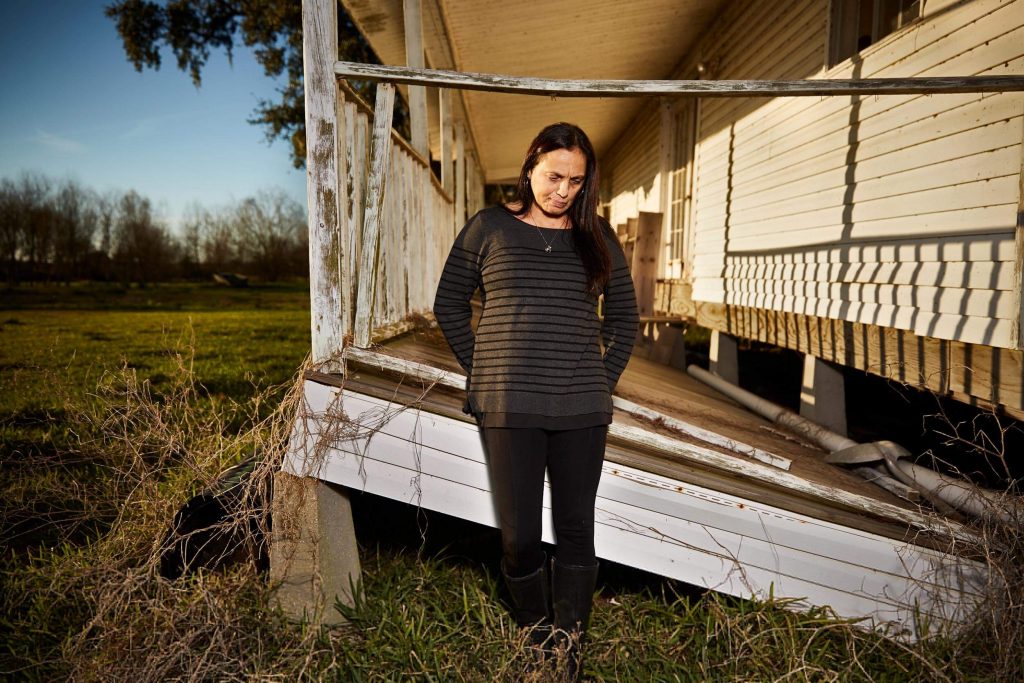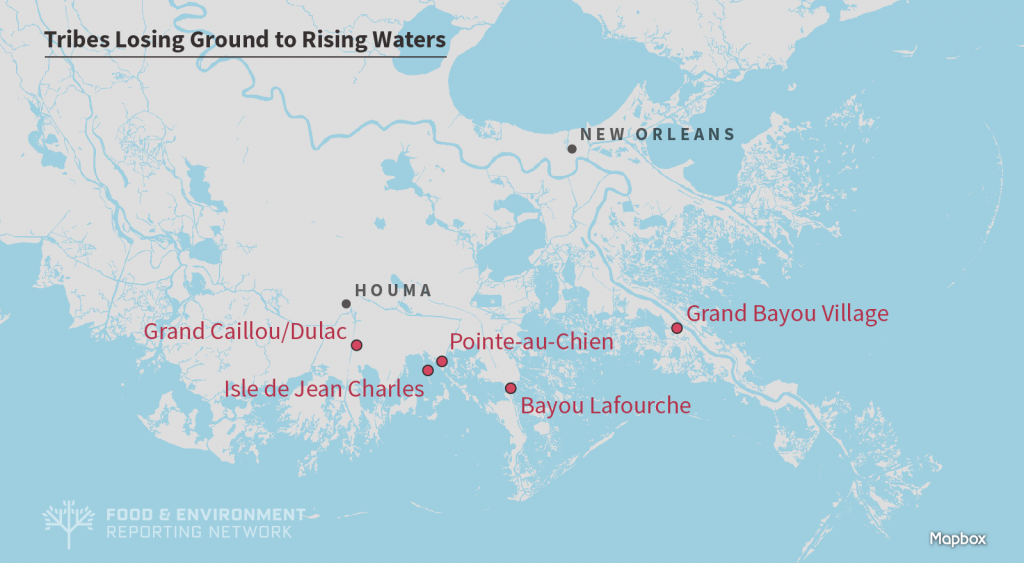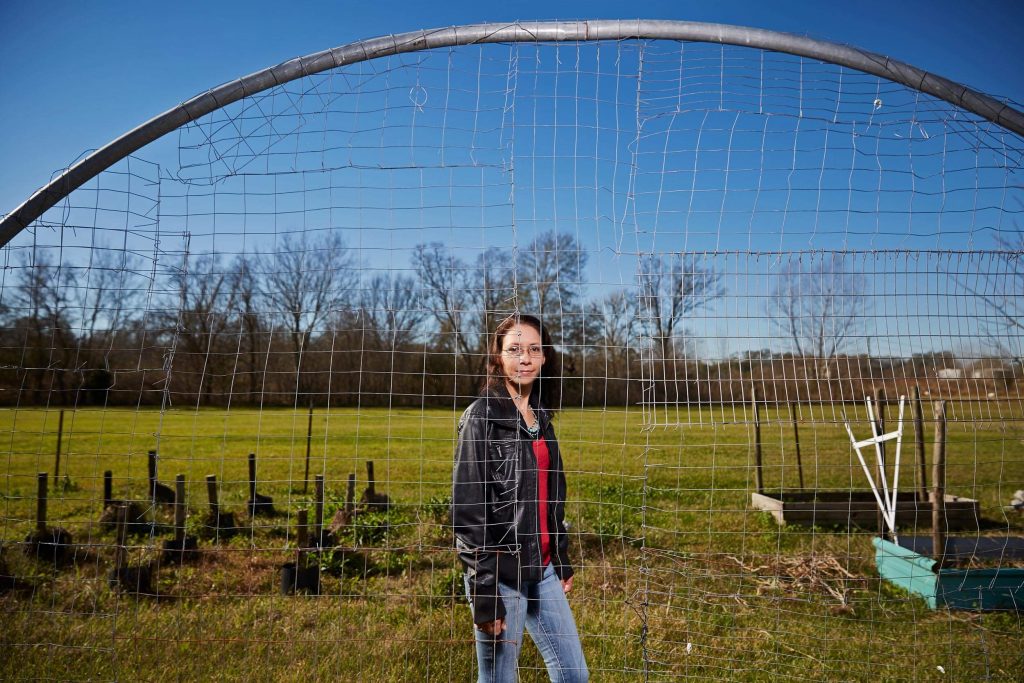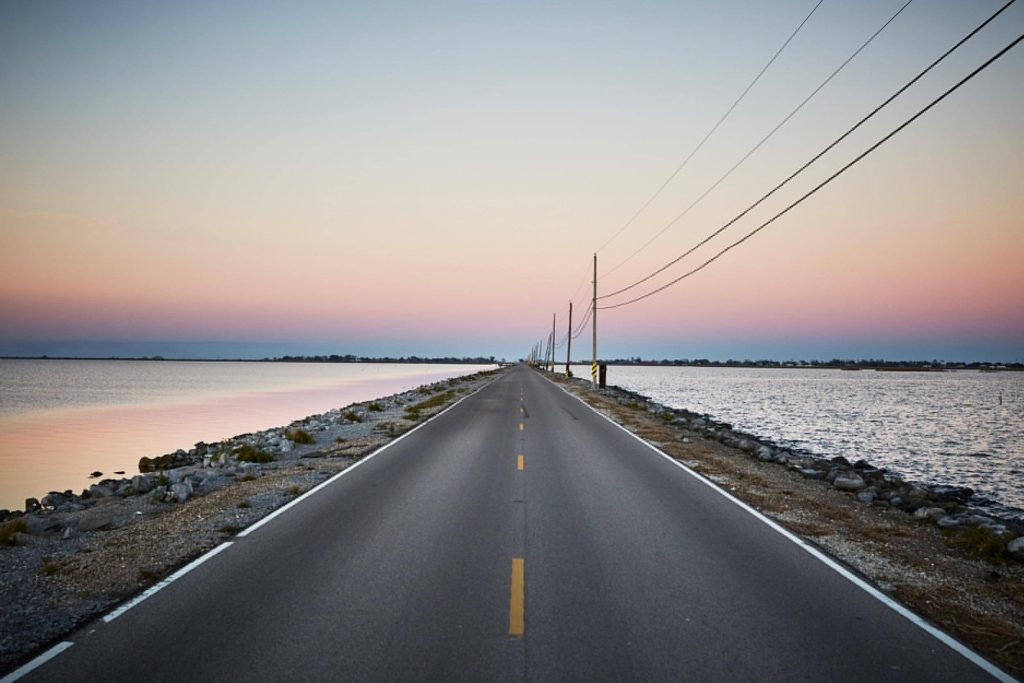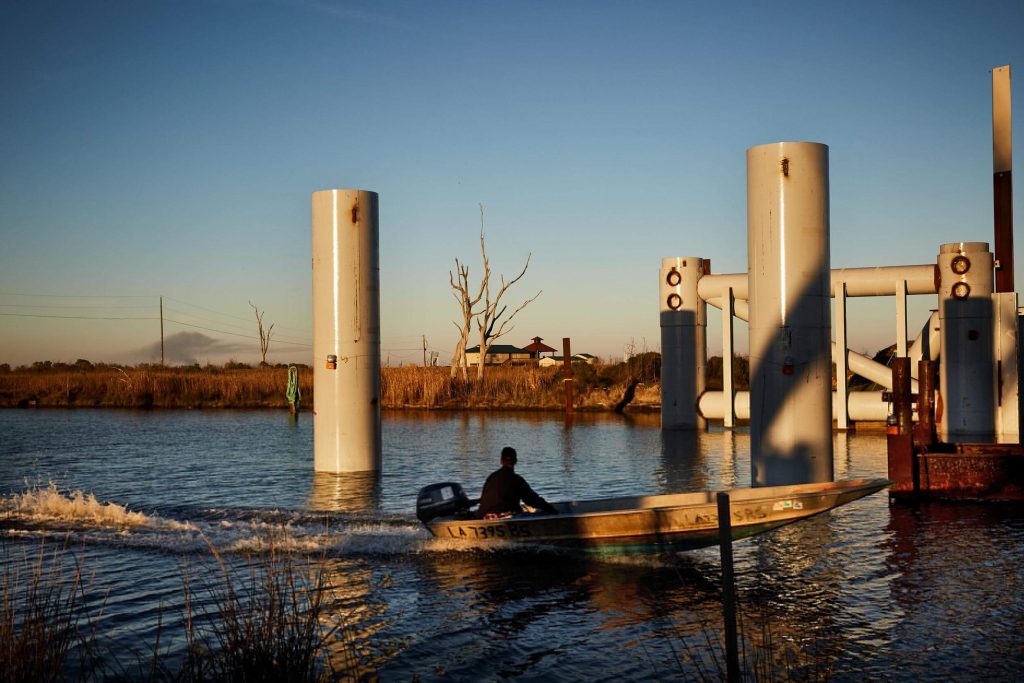Reclaiming Native Ground
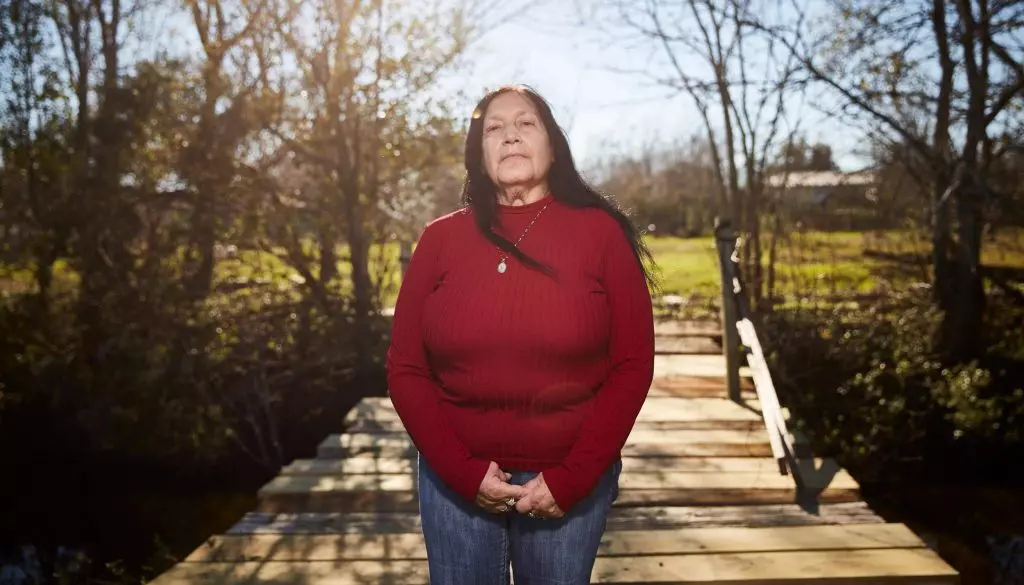
This article was originally published at FERN and has been republished with permission.
When Theresa Dardar was growing up in Houma, her mother used to take her to visit relatives in the Pointe-au-Chien Indian Tribe community. They would drive 20 miles toward the Gulf of Mexico, park at the local grocery store, and ask someone to ferry them across the bayou. From there, they’d walk across land thick with oak, hackberry, and palmetto until they reached her grandfather’s house. [1] [1] This story was produced in a collaboration between the Food & Environment Reporting Network, which focuses on investigative and explanatory reporting about food, agriculture and environmental health; Gravy, which explores stories of the changing American South through the foods we eat; and The Lens, which covers public-policy issues facing New Orleans and the Gulf Coast. All rights reserved.
Dardar’s grandfather raised chickens and pigs. Next door, her uncle raised cattle. Even at 62, Dardar carries a vivid memory of her grandfather dipping a cup into the blood of a freshly slaughtered pig and drinking it. He would send some of the pork home with Dardar’s mother, who would make it into boudin sausages. She would also bring home some of the redfish he caught in the waters near his home.
Back then, tribal members fed themselves well—with seafood, of course, but also with the livestock they raised, the fruits and vegetables they planted, and the marsh hens they extricated from their fur traps. They hunted for turtle and alligator, too, and gathered medicinal plants from the land.
That’s because there was land. Viewed from above in the early 20th century, Pointe-au-Chien was surrounded by a dense thicket of green, broken up by splashes of blue. Those proportions flipped over Dardar’s lifetime. The land vanished until the community became a narrow neck of high ground surrounded almost entirely by open water. The area immediately around Terrebonne Bay, which includes Pointe-au-Chien, went from 10 percent water in 1916 to 90 percent in 2016, according to geographer Rebekah Jones, a Ph.D. candidate at Florida State University. The U.S. Geological Survey said the larger Terrebonne Basin lost almost 30 percent of its land from 1932 to 2010.
Today, the property surrounding Dardar’s grandfather’s home bears little resemblance to the place she visited as a child. “There’s no more trees,” she said. “There’s a little strip of land where he and my uncle lived. … The piece of land is so small now that I don’t think anyone would be able to live there.”
This is the dilemma Dardar spends much of her time agonizing over. She has lived in Pointe-au-Chien for more than 40 years, in a house overlooking a bayou lined with shrimp boats. (Pointe-au-Chien means “Dog Point”; the larger rural community is often called Pointe-aux-Chenes, or “Oak Point.”) She has served as a deckhand on her husband Donald’s shrimping boat and has skinned the nutria he once trapped in the winters. She’s watched that shrimping business dwindle, and the trapping business disappear altogether. And she’s seen neighbors give up on their gardens and animals.
Dardar isn’t sitting back, though. She and her tribe are trying out new ways to grow vegetables and medicinal plants even as the land around them vanishes. She heads an intertribal effort to restore food sovereignty—the sustainable production of healthy and culturally appropriate food—to a half dozen of Louisiana’s Native American communities. That effort might inform all of us about how to feed ourselves during these times of environmental stress.
The land loss faced by the 680-member Pointe-au-Chien tribe is one of the central facts of life south of New Orleans. Each year, about 16 square miles vanish from the Louisiana coast. The levees along the Mississippi River have starved the area of the sediment needed to replenish a sinking delta. The dredging of 10,000 miles of canals by the oil and gas industry has sucked saltwater inland, killing the vegetation that holds the mud together. And climate change is accelerating global sea-level rise, which promises to overtake subsidence as a key factor in land loss during the next century.
What’s more, as the barrier islands to the south have disappeared, Pointe-au-Chien has become more open to storm damage. In 1985, Hurricane Juan flooded the Dardars’ mobile home; the couple, along with Donald’s grandmother, took shelter in a small boat. The couple built an elevated house after that—it’s now common to see houses built up on stilts—and a small levee went up in their backyard. But they remain vulnerable: 2008’s Hurricane Gustav blew off part of the Dardars’ porch, tore a hole in their roof, and destroyed other houses. Less than two weeks later, the community was flooded by storm surge from Hurricane Ike.
The U.S. Army Corps of Engineers is trying to protect communities like Pointe-au-Chien with a controversial US$13 billion project called Morganza to the Gulf—98 miles of earthen levees punctuated by floodgates. A levee is going up immediately behind the tribal headquarters, at the edge of open water that used to be cattle pasture. Dardar believes the levee will “buy us a few years,” but only if the community doesn’t suffer a direct hit by a fearsome storm. “It’s in God’s hands; let’s put it that way,” she said. Some scientists agree the project will have limited benefit, particularly considering the price tag.
Sitting on the back porch of her tribe’s headquarters, Dardar looked over a small, scrubby yard with a row of small trees at the back. Beyond that, a dump truck revved and beeped as it poured dirt for the levee. Dardar recalled wondering why the project was called Morganza to the Gulf, “because the levee doesn’t go to the Gulf.” Then she realized: “The Gulf of Mexico will come to us.”
Not only do land loss and flooding make it harder to raise livestock, planting fruits and vegetables also gets tricky. “When I grew up, everybody had a garden,” said tribal council member Christine Verdin, who is 57. “My grandma had probably five different species of figs. She had orange trees, satsumas, navels. She had lemon trees. She had her own peaches. And because of the water coming in, it just ruined all her plants and all her trees.”
Theresa Dardar’s 83-year-old mother-in-law, Nazia Dardar, maintains a large garden in a backyard filled with fruit trees, Muscovy ducks, and roosters. She sells her surplus produce to neighbors. But she’s one of the few holdouts who aren’t discouraged by repeated flooding.
That leaves the tribe’s traditional mainstay, seafood. But even that is becoming a luxury. Imports of cheap shrimp have driven prices so low at the dock that commercial shrimpers like Donald Dardar can hardly justify the cost of fuel and ice. Local crabbers report significant drops in their yields since the 2010 BP oil spill. (It is one of several possible causes.) And the federal government warns that accelerating wetlands loss in Louisiana endangers the “nurseries for many species of fish and shellfish.”
With residents replacing seafood with store-bought chicken, pork, and beef, the tribal culture is suffering, too. “We don’t see each other as much,” Dardar said. “Before the spill, Donald’s brother used to do a crab boil at least three, four times a week on the side of the bayou.” No invitation was needed: “The community would pass by, and they would stop and we’d visit. They’d eat.” That tradition ended after the crab haul became sporadic. “It all fell apart,” she said.
It’s not just Pointe-au-Chien. Across southeastern Louisiana, tribes are grappling with what land loss means for their dinner plates, their traditions, and their health.
“We are stewards of the environment: protect first, use second,” said Shirell Parfait-Dardar, traditional chief of the Grand Caillou/Dulac Band of the Biloxi-Chitimacha-Choctaw tribe. (Dardar is a common name across tribes.) The 450-member tribe, which has fanned north from its original home at the edge of the Gulf, used to raise dairy cattle and poultry, she said. But flooding has ruled out ethical husbandry.
“We will not suffer any animal,” said Parfait-Dardar, who lives in Chauvin, southeast of Houma. “A south wind comes through here, and that’s it—you’ve got yards covered. We can get out of the way of the waters. Animals don’t have that benefit. They’re stuck where you put them. And we will not subject them to that.”
As the tribe has moved away from self-reliance, family diets have shifted toward processed food. “The boxed dinners, they are very convenient,” Parfait-Dardar said. “You can get a ton of them, 10 for $10. And for a family as big as mine—I have four children [and] my husband doesn’t make all that much money—we’ve got to stretch that dollar to feed our kids.” The health consequences, though, have been predictable. “We have a very high rate of high cholesterol,” she said of the tribe. “Diabetes is rampant. And it’s all got to do with our diet.”
These are issues that Native Americans deal with nationally. “If you take the food desert map and overlay it with where tribal lands are, there is pretty much a direct correlation,” said Lea Zeise, a New Orleans–based staffer for the Intertribal Agriculture Council. It’s no coincidence, experts say, that Native Americans are twice as likely as whites to be diagnosed with diabetes and are at high risk for heart disease and stroke. “The disruption of traditional agriculture and hunting has resulted in increased consumption of fat—typical of the contemporary western diet,” writes physician Dorothy Gohdes in the National Institute of Diabetes and Digestive and Kidney Diseases’ reference book Diabetes in America.
Some Louisiana tribes have decided they can’t tackle the problems alone. Six have joined together to discuss innovative ways to reclaim their food sovereignty. Calling themselves the First People’s Conservation Council, they meet every three months, along with representatives from nonprofits and the U.S. Department of Agriculture’s Natural Resources Conservation Service. Theresa Dardar serves as president.
Five of the tribes are coastal. None of them is recognized by the U.S. government, though most are recognized by the state of Louisiana, which has less restrictive standards. Besides Pointe-au-Chien and Grand Caillou/Dulac, they include the 600-member Isle de Jean Charles Band of the Biloxi-Chitimacha-Choctaw, which has lost 98 percent of its island home since 1955 and last year received a $48 million federal grant to relocate inland. (Isle de Jean Charles is three miles from Pointe-au-Chien but considerably more exposed. Most of the members, including the chief, have already left the island.) Rounding out the council’s coastal members are the Bayou Lafourche Band of the Biloxi-Chitimacha, whose 600 members have been forced inland by devastating hurricanes, and the Grand Bayou Village Atakapa-Ishak/Chawasha tribe, whose 14 homes in Plaquemines Parish are accessible only by boat. Grand Bayou’s tribe has 400 members, but most live away from the village, in part because of the challenges of living with land loss.
These meetings are hours-long brainstorming sessions that draw from the collective wisdom of the tribes and the technical expertise of the government and nonprofit groups. Some of the discussions center around programs the Agriculture Department funds, like plastic-covered hoop houses to protect vegetable gardens. (The U-shaped metal structures extend growing seasons, minimize soil erosion, and protect against pests and wind.) They talk about lobbying for federal recognition of soft-shell crab as a farm commodity, which could make producers eligible for crop insurance, disaster loans, and federal subsidies. And they discuss 21st-century ways to share traditional knowledge, like an Excel spreadsheet to record changes in growing seasons.
On a December morning at the Agriculture Department’s office in the St. Charles Parish town of Luling, representatives from four tribes got together for the final First People’s Conservation Council meeting of 2016. There were greetings in French, a prayer in English, and a business agenda that extended well beyond lunchtime.
Zeise of the Intertribal Agriculture Council reported on a federal grant her organization had received to develop marketing cooperatives, which the tribes could use to sell products like dried shrimp. “We’d have to start small,” said Rosina Philippe, an elder from Grand Bayou Village. “We know the process of drying shrimp. But as far as the business side of it, that’s something that we’d have to learn.”
“But is there interest in learning that kind of stuff?” Zeise asked.
“Yes,” Philippe said. “We talk about it all the time. We just don’t know how to put the next foot forward.”
Philippe also talked about a project her tribe, which is not protected by levees, is working on: gardens in boxes that can be lifted with pulleys. Grand Bayou Village has tried traditional raised-bed gardens, but they have proven impractical. “Tides have been higher,” she explained to me afterward. “In storm events, we get more water, so they get inundated with saltwater.” That kills the plants. Hence the idea of gardens that can be raised and lowered mechanically. They could grow typical vegetables like tomatoes, along with traditional medicines and indigenous plants like wild celery and parsley. Philippe also described plans to create a floating garden by mounting a container on top of a 4-foot-by-8-foot section of plastic dock.
Like their ancestors did, the tribes are thinking about their children’s children—seven generations down the line. The council’s conversations are starting to bear fruit now, albeit on a modest scale. Down in Chauvin, Shirell Parfait-Dardar—inspired by discussions of raised-bed gardens—has built one of her own using recycled materials, including old trampoline parts that serve as a trellis for green beans. In Pointe-au-Chien, Theresa Dardar’s husband Donald has started growing vegetables under a federally subsidized hoop house behind the couple’s home. The couple was spurred to act after Theresa talked with a Department of Agriculture staffer who attends council meetings.
Pointe-au-Chien’s big project, still in its early phases, is to build a greenhouse for medicinal plants and possibly vegetables. Christine Verdin, the tribal council member, hopes the effort will teach children about gardening and will produce crops that people can transfer to their own yards. “If we can get things started here in this greenhouse,” she said, “I’m hoping it will multiply.”
More than any individual project, what’s instructive about the First People’s Conservation Council is the pooling of wisdom. Federal staffers provide technical guidance but don’t steer the conversation. This, Zeise said, is refreshing. “It’s a solutions-based relationship—and not just the solutions that the [Agriculture Department] already has in mind, but the solutions that actually match the cultural and subsistence needs of the community,” she said.
One of those staffers, conservationist Randolph Joseph, said that’s the principle: People with a wide range of experiences, working in collaboration, stand the best chance of coming up with innovative responses to threats like land loss and saltwater intrusion.
“It’s going to take their creativity to solve that problem,” he said. “Once they get it down, then maybe we can help them to perfect it, to expand on it, to make it more efficient—and maybe [we can] adopt some of the practices that they’re using, that we may not have knowledge of. We don’t have all the answers to their issues. But I think working together, we can find some practices that will work.”
Joseph hopes the conservation council can become a model for tribal and nontribal communities. Louisiana’s coastal tribes are some of North America’s first responders: They’re dealing with disaster ahead of most of us. But these environmental problems won’t remain isolated: In the Terrebonne Basin alone, the coastline could eventually creep north to the suburbs of Houma, according to state and federal coastal experts.
Indeed, other communities will have to contend with how to feed themselves in the face of climate change and coastal erosion. “We’re on the front lines and it’s going to spread,” Parfait-Dardar said. By trying solutions and sharing what works, she added, “we can help make a difference. We have to consider what we’re leaving behind for the next seven generations.”
Listen to another version of this story as a podcast at Gravy.































